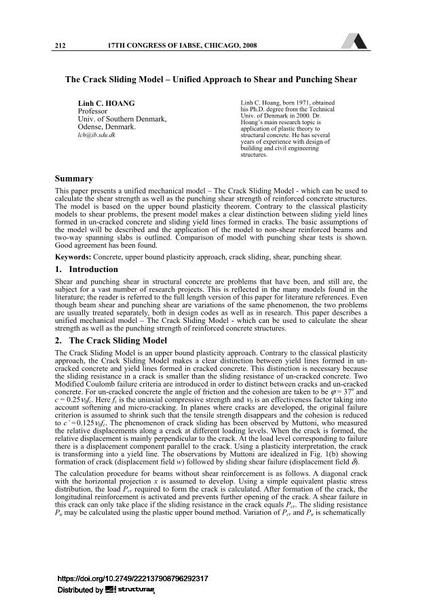The Crack Sliding Model – Unified Approach to Shear and Punching Shear

|
|
|||||||||||
Bibliographic Details
| Author(s): |
Linh Cao Hoang
|
||||
|---|---|---|---|---|---|
| Medium: | conference paper | ||||
| Language(s): | English | ||||
| Conference: | 17th IABSE Congress: Creating and Renewing Urban Structures – Tall Buildings, Bridges and Infrastructure, Chicago, USA, 17-19 September 2008 | ||||
| Published in: | IABSE Congress Chicago 2008 | ||||
|
|||||
| Page(s): | 212-213 | ||||
| Total no. of pages: | 8 | ||||
| Year: | 2008 | ||||
| DOI: | 10.2749/222137908796292317 | ||||
| Abstract: |
This paper presents a unified mechanical model – The Crack Sliding Model - which can be used to calculate the shear strength as well as the punching shear strength of reinforced concrete structures. The model is based on the upper bound plasticity theorem. Contrary to the classical plasticity models to shear problems, the present model makes a clear distinction between sliding yield lines formed in un-cracked concrete and sliding yield lines formed in cracks. The model applies to simply supported and continuous beams with arbitrary loading configurations. As will be demonstrated, the model provides a simple and transparent explanation to the enhancement of the shear capacity due to prestressing or compressive axial forces. It will be shown that the model can be extended to deal with punching shear in two-way spanning slabs. The results obtained from the model have been compared with a large number of tests. Good agreement has been found. |
||||
| Keywords: |
concrete shear punching shear upper bound plasticity approach crack sliding
|
||||
